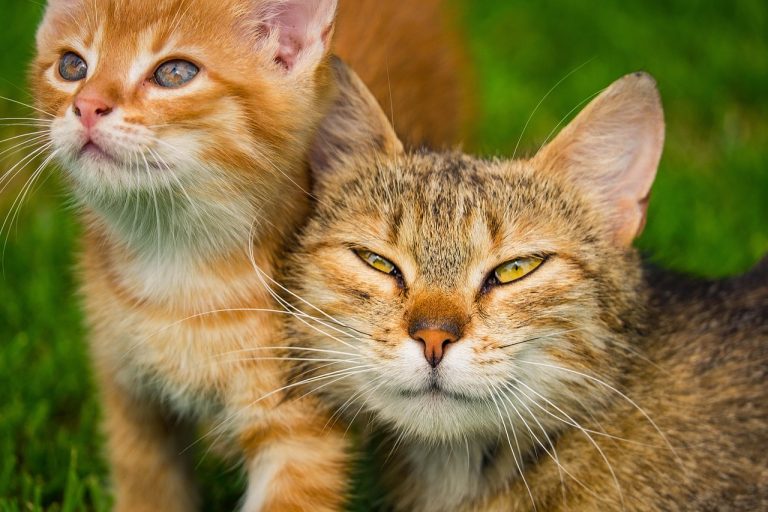10 Springtime Dangers for Pets
Spring brings visions of sunshine and flowers, but watch out for these potential dangers to your pet.

It was a long winter here at the clinic. Short, cold days and long, colder nights. Busy enough, help the pets, talk to the people. Go home, stay warm, go to sleep.
Then, spring finally pops. I’m outdoors more, and so is Flippy, Dipppy, Meow and Tooters. Back to very busy days helping the pets get out of trouble with all their springtime follies and jollies.
Here are 10 hazards for pets during the spring season:

Don’t leave your pet’s safety to chance
Sign up for Petful recall alerts today.

1. Meet-and-Greets
Spring is in the air, and everyone is sniffing each other’s derrieres. Your pets have to meet their neighbors all over again. They forgot that Buffy the Maine Coon Slayer lived next door or that Mack the Ripper moved into the Bichon’s house.
- Cat fight abscesses begin to appear.
- Dog walks and dog park encounters escalate to trench warfare.
If spring is for lovers, where did the love go?
2. Spring Food Festivals
Your pets eat more junk in the spring. They eat new grass. They eat any excrement or fun thing growing or moving outside. While people are in spring love, our pets are in spring buffet.
I have so many wide-eyed clients who can’t understand why their cat can’t easily digest that songbird or the dog can’t munch on the bark mulch without causing problems.
3. Ticks
Getting your pets protected against fleas and ticks is so important if you live in flea and tick country. Just do it to prevent health and skin worries.
Veterinary tip: There are many flea and tick meds on the market, and they are not all equal. Ask your vet before believing false advertising claims or online pharmacies. It’s more profitable for the manufacturers to lie to you, and they don’t care if you buy the right product for your needs.
4. Toxic Lawn Treatments
Don’t use unsafe garden products on your own lawn, and beware of your neighbor’s toxic chemistry projects too. It’s amazing what toxins people will use just to keep a lawn looking like an iridescent green carpet free of weeds. Equal rights and health care for dandelions!
5. Toxic Plants and Shrubs
Many ornamentals, if eaten, may cause GI upset, but certain beautiful flowers, shrubs, wild flowers and mushrooms can be extremely dangerous.
Most dogs and cats live around toxic plants and shrubs and don’t eat them. If you have a puppy, however, or a dog or cat who is notorious for eating anything he finds, be vigilant during blooming seasons. Watch out for even the very common spring bloomers such as azalea, rhododendrons and lily-of-the-valley, to name a few.
For more info, see the ASPCA’s lists for dogs and cats.

6. Allergies
Although humans tend to sniffle and sneeze, allergic pets begin to itch from allergens in the air. Check with your vet as soon as your pet begins the spring itch. Earlier intervention not only gives early relief, but also can lessen the severity of the itching season.
7. Parvo and Other Contagious Diseases
Warmer weather and closer contact among animals encourage diseases to spread. This can be serious, such as a parvo outbreak in dogs, for example, or a mild but annoying problem, such as upper respiratory viruses in cats.
Make sure your pets are up to date on the most important vaccines, and be particularly aware of a boarding facility’s reputation and get necessary inoculations before kenneling your pets.
8. Bugs
Certain insects also have their “meet-and-greets” in the spring.
In the Northeast, black fly season is almost upon us. Bites from black flies, for instance, are usually more of an annoyance than a real danger, but many folks worry if they see bunches of red spots on their dog’s abdomen and can’t identify them. These spots are usually not itchy unless your dog has a particular allergy, and they usually fade in a few days.
Be aware of the common pests in your area, and use the same sense you would for your pets as yourself. For the ever-present threat of an allergic reaction to a bee, wasp, hornet or spider bite, keep Benadryl.
9. Intestinal Parasites
Although always a threat, intestinal parasites are more prevalent in warmer weather and climates. Parasites in feces enter the soil and can be picked up more easily by another pet in the spring. Heartworm preventives and flea and tick products often prevent against intestinal parasites.
Check with your vet to see if your dog or cat is already protected or needs additional stool checks or de-wormers.
10. I Think That’s Enough Already!
Stop the worrying and have a mint julep on the porch or a lemonade on the deck.
Springtime is a temptress to get your pets into trouble in the burgeoning world of natural wonder. As you sit by the blooming dogwoods and pussywillow, make sure the dogs are not loose in the woods and the pussycats are not stuck up in the willows.
Keep your pets safe as they soak up the splendor of this season with you.
This pet health content was written by a veterinarian, Dr. Debora Lichtenberg, VMD. It was reviewed for accuracy by Dr. Pippa Elliott, BVMS, MRCVS, and was last updated Oct. 13, 2018.







